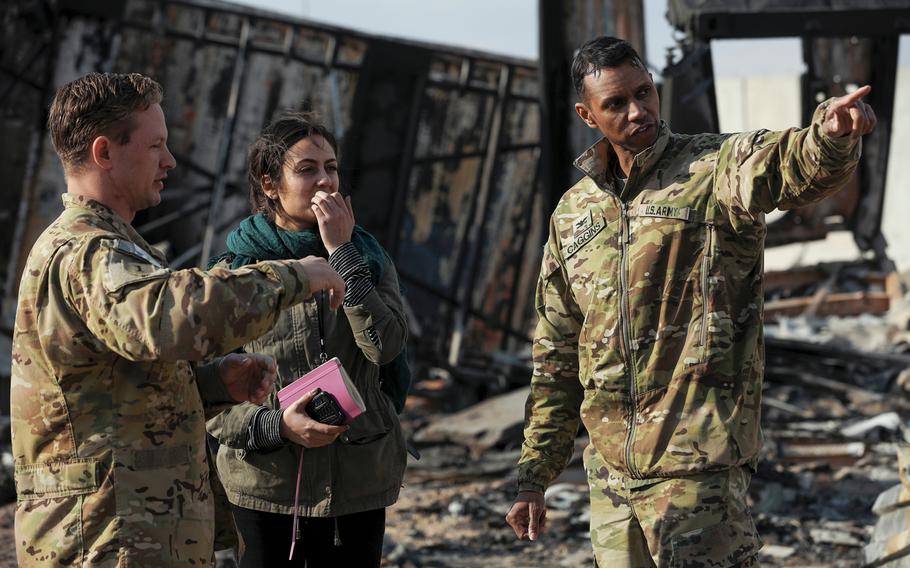
U.S. Army Col. Myles B. Caggins III, Combined Joint Task Force - Operation Inherent Resolve military spokesperson, right, answers interview questions at Al Asad Air Base, Iraq, Jan. 13, 2020. Multiple international news agencies were invited by military officials to participate in a media event at Al Asad due to the recent ballistic missile attacks. (Derek Mustard/U.S. Army)
The Pentagon on Tuesday added another 16 service members to the list of those suffering traumatic brain injury from an Iranian missile attack on al Asad Air Base in Iraq Jan. 8, raising the total to 50.
The Pentagon has increased the number of service members injured at least four times since the missile strike, with the last announcement of a total of 34 coming on Friday.
In the immediate wake of the attack, President Donald Trump and the Pentagon said there had been no U.S. injuries.
Of the 16 service members newly announced with traumatic brain injury, 15 have returned to duty in Iraq, Lt. Col. Thomas Campbell, a Pentagon spokesperson, said in a statement.
Thirty-one of the 50 service members injured were treated in Iraq and returned to duty, Campbell said.
Another 18 have been transported to Germany for further treatment, he said.
One service member who had been moved to Germany for other health reasons was diagnosed with traumatic brain injury after arriving there, he said.
Pentagon spokesman Jonathan Hoffman said on Friday that eight of the injured troops had been transported to the United States to receive treatment as outpatients at either their home stations or at Walter Reed National Military Medical Center in Maryland.
Campbell said Tuesday no information was available whether additional service members had been sent stateside.
The Pentagon said previously it will review its injury reporting requirements in light of the shifting accounts of casualties from the missile strike.
Hoffman said Friday that the changing injury reports were partly a reflection of an existing policy that does not require incidents of traumatic braining be reported directly to the Pentagon.
Iran launched 11 ballistic missiles into Iraq in retaliation over a U.S. drone strike Jan. 3 in Baghdad on Iran’s top military official, Maj. Gen. Qassem Soleimani, who commanded the elite Quds Force.
The missiles landed in al Asad, a base in western Iraq’s Anbar province where about 1,500 U.S. and allied troops are stationed.
olson.wyatt@stripes.com Twitter: @WyattWOlson